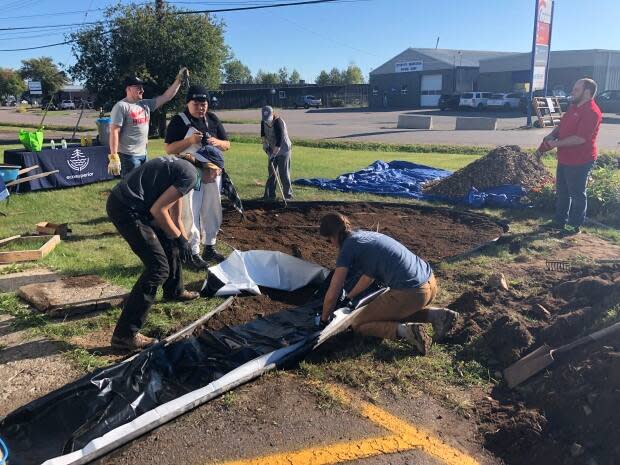EcoSuperior rain garden in Thunder Bay to help reduce water flowing to city storm sewer

The front lawn at Habitat for Humanity in Thunder Bay, Ont., is smaller thanks to the work of some volunteers, to build a new rain garden.
The garden, measuring about four metres by three metres, will help absorb water running off of the roof of the group's office and ReStore in the city.
The rain garden was created with the work of volunteers on Wednesday morning.
"It's one of many different techniques that you can use in an urban watershed to manage storm water runoff," said Julia Prinselaar, a program coordinator with EcoSuperior.
EcoSuperior was providing some labour, as well as knowledge on how to build the rain garden.
While the goal is to reduce the amount of storm water runoff, the plants in the garden will also help, "infiltrate pollutants from storm water to help prevent urban flooding."
Prinselaar said more and more homeowners and business owners are asking about building rain gardens where current lawns or driveways are now, to reduce storm water runoff.
She said a lack of rain this summer, with heavy rains earlier in the year, proves how important the gardens are when it comes to adapting properties to a changing climate.
"So, because these are planted with species that set really deep roots into the soil, they're well adapted to extremes, especially the species that we selected are just fine to be planted and overwinter in our extreme cold climate."
"They also tend to break up the soil, pull water deep into the ground, survive and thrive in periods with a lack of rain, as well as heavy periods of rain."
Prinselaar said the budget for a rain garden can vary depending on size and what plants and landscaping is required for the area, but a typical home version could run from $500 to $1,000. EcoSuperior, along with the city, have grants available to offset some of the cost as well.

